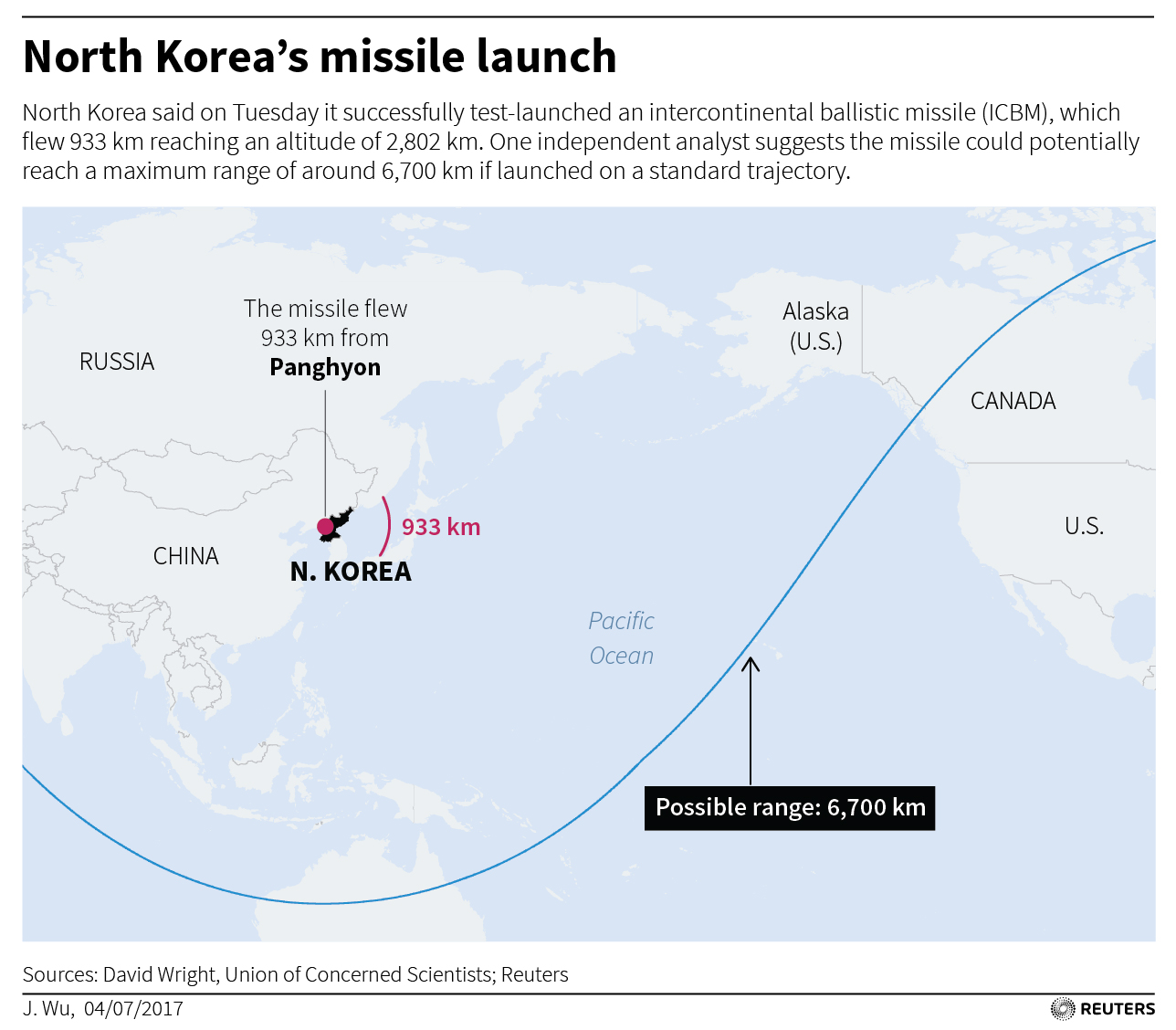
WASHINGTON (Reuters) – U.S. officials said on Tuesday they have seen increased North Korean activity that could be preparations for another missile test within days.
The officials, speaking on condition of anonymity, said that over the past week intelligence has spotted equipment, possibly for launching an intercontinental ballistic missile (ICBM) or an intermediate-range missile, moving into a site in the western city of Kusong.
Earlier this month, reclusive North Korea, which regularly threatens to destroy the United States and South Korea, said it had conducted its first test of an ICBM and mastered the technology needed to deploy a nuclear warhead via the missile.
Pyongyang’s state media said the test verified the atmospheric re-entry of the warhead, which experts say may be able to reach the U.S. state of Alaska.
However, the vice chairman of the U.S. Joint Chiefs of Staff recently said the July 4 test stopped short of showing North Korea has the ability to strike the United States “with any degree of accuracy.”
The Washington Post reported on Tuesday that the Defense Intelligence Agency (DIAL), the Pentagon spy agency, has assessed that North Korea will be able to field a nuclear-capable ICBM by next year, earlier than previously thought.
According to two U.S. officials, however, some other analysts who study North Korea’s missile program do not agree with the DIAL assessment.
“DIA and the South Koreans tend to be at the leading edge of estimates on North Korea’s military programs, and that’s understandable,” said one of the U.S. officials, who both agreed to speak only on the condition of anonymity. “There is no question that the DPRK has moved further and faster with its effort to develop a reliable, nuclear-capable ICBM that can be built in quantity, but there are still doubts about whether it can cross that threshold in a year.”
DPRK stands for North Korea’s official name, the Democratic People’s Republic of Korea.
A second U.S. official familiar with the science of ICBMs said, also on the condition of anonymity, that North Korea still has not demonstrated the ability to design and build nuclear warheads small enough to be delivered on its long-range missiles and tough enough to survive re-entry into the atmosphere.
A third official, who also spoke on condition of anonymity, said that even if Pyongyang develops a workable ICBM from its “tinker-toy mix of old Russian missiles,” it would pose a threat to the United States and its allies only if North Korean leader Kim Jong Un’s regime is suicidal.
The North has made no secret of its plans to develop a nuclear-tipped missile capable of striking the United States and has ignored calls to halt its weapons programs, even from its lone major ally, China. It says the programs, which contravene U.N. Security Council resolutions, are necessary to counter U.S. aggression.
Speaking in Beijing, Chinese Foreign Ministry spokesman Lu Kang said on Wednesday he was aware of the reports of a possible new North Korean missile test.
U.N. resolutions were clear when it came to North Korean missile launches and China opposed any move that ran counter to them, Lu told reporters.
“We hope all sides can bear in mind the broad situation of peace and stability on the Korean peninsula and exercise restraint,” he added.
(Reporting by Idrees Ali and John Walcott; Additional reporting by Ben Blanchard in Beijing; Editing by John Walcott and Nick Macfie)













